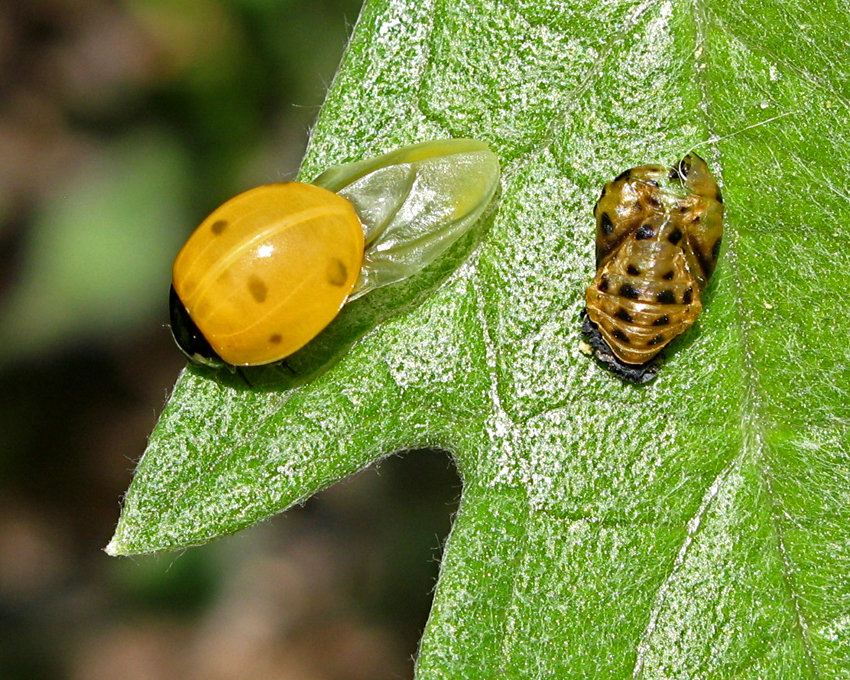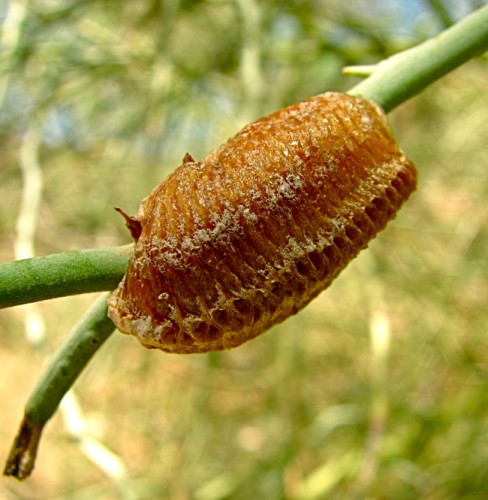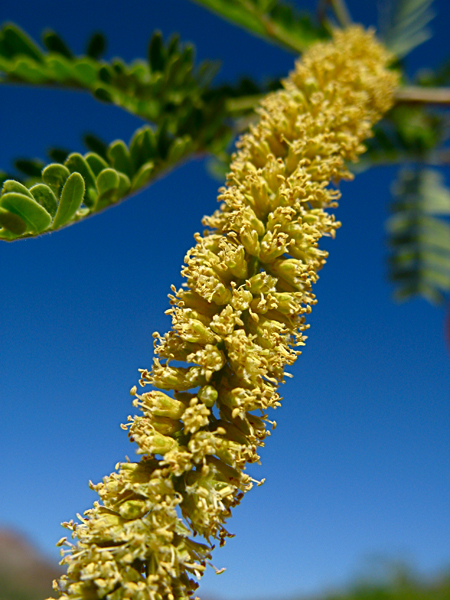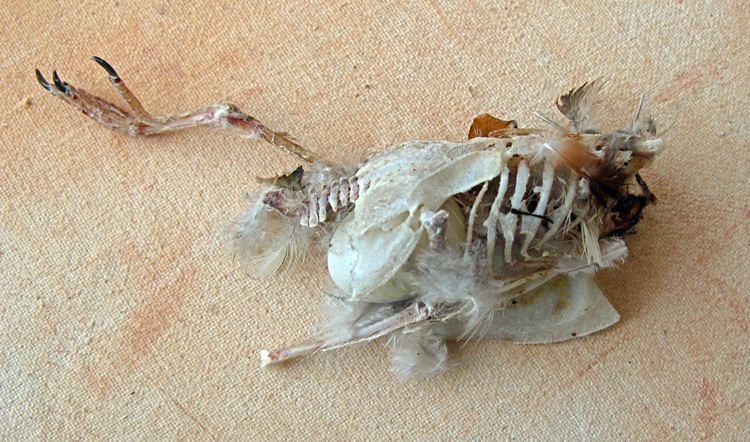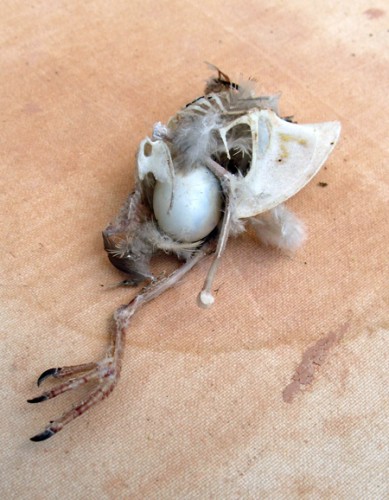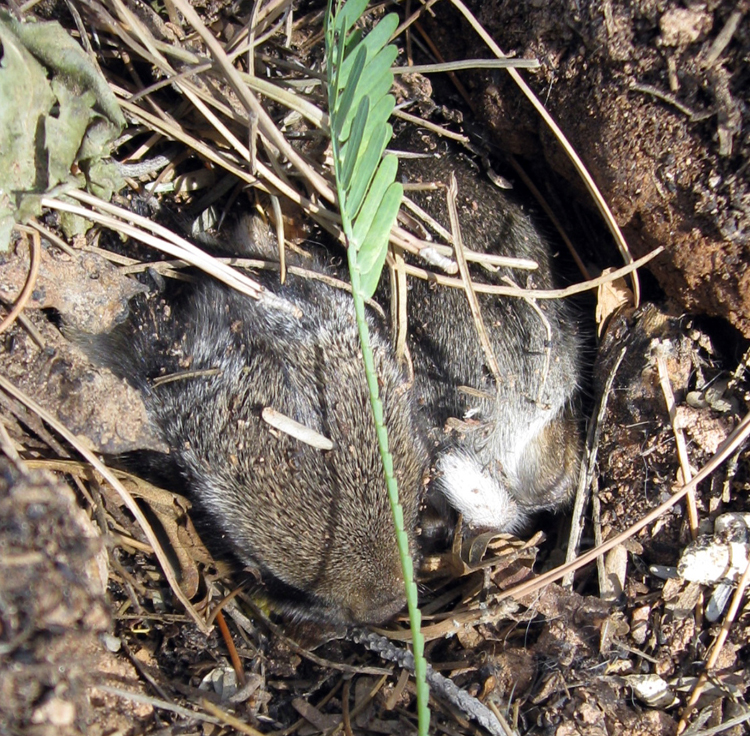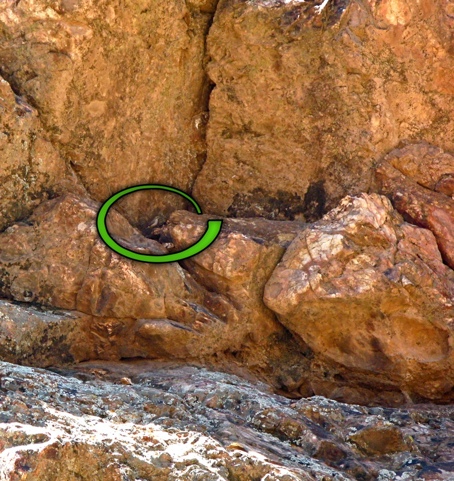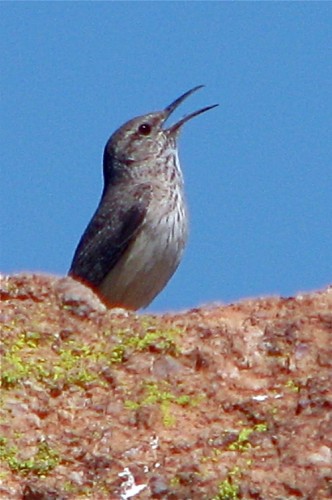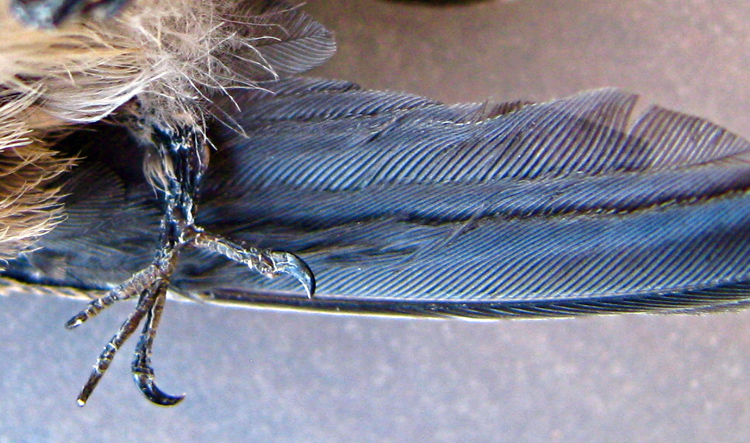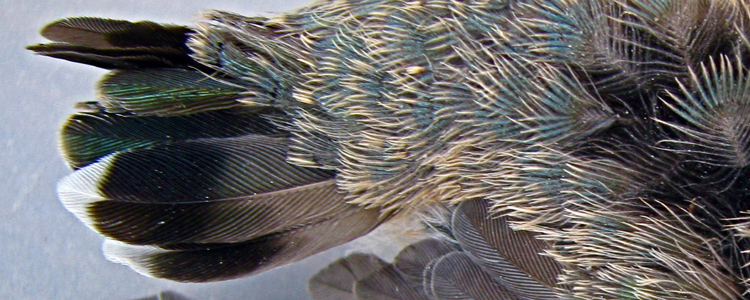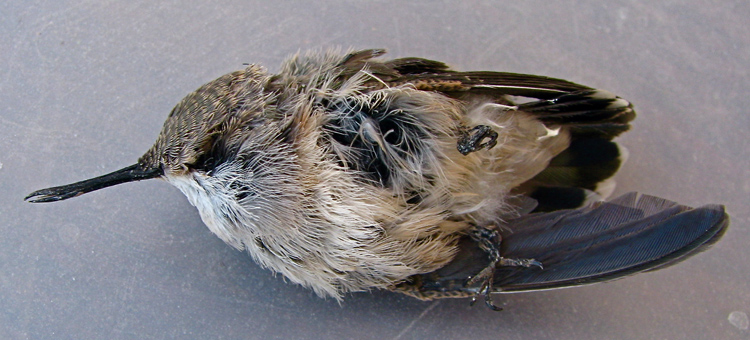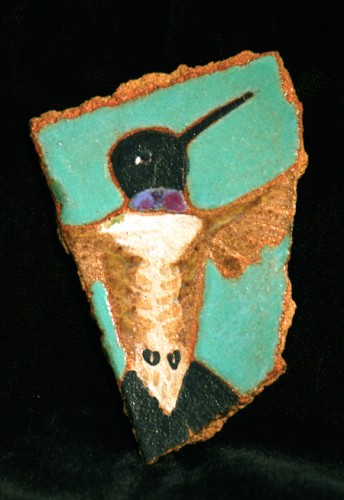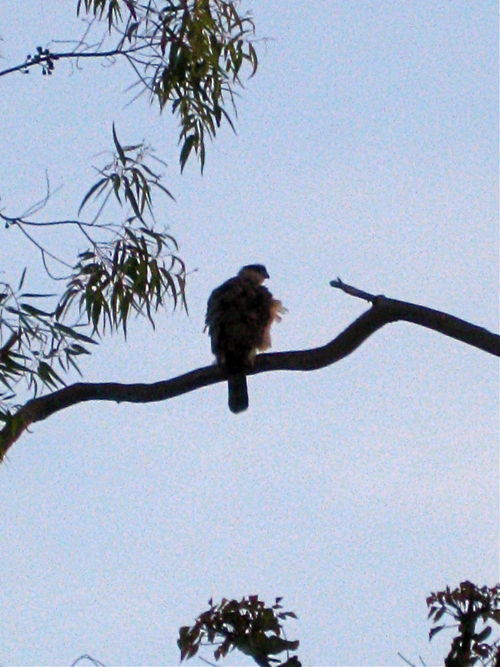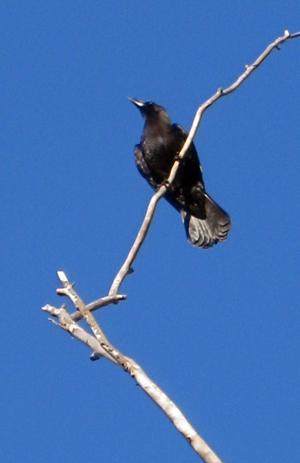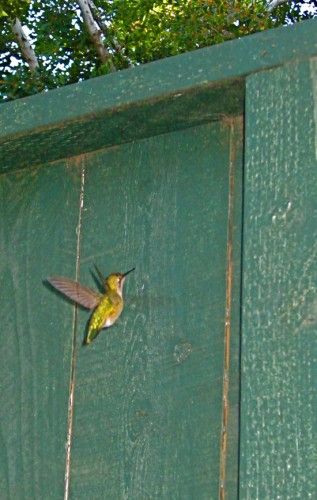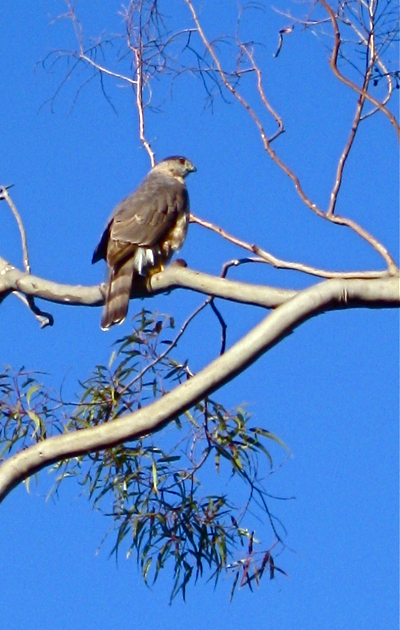…and also why it’s called “Broad-billed”.
Although those two statements concern two different birds.
Update: as of Friday morning, “Bill”, the Broad-billed hummingbird, is still reporting in to our backyard feeders, passing the 72-hour mark (I first observed him on Monday afternoon). We guess he’ll be here until he’s not!
Breeding season for Anna’s hummers is in full swing here in Phoenix. The males are executing their showy flights, shrieking down from a height with their gorgets flashing scarlet, making a loud peeping pop 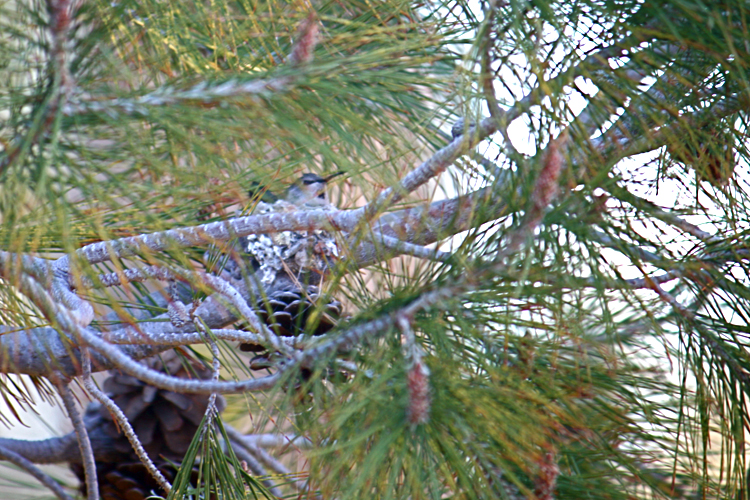 with their tail feathers like tiny bullroarers, then rising vertically upward to do it again and again, usually targeting a perched female to impress her with this routine.
with their tail feathers like tiny bullroarers, then rising vertically upward to do it again and again, usually targeting a perched female to impress her with this routine.
<< Anna’s hummer on current nest in Aleppo pine (click to enlarge; all photos A.Shock)
And from my studio I’ve been watching a female Anna’s gathering spider webs and flying away with her beak wrapped in gossamer, a sure sign of “nidification,” otherwise known as nesting.
When our trees were trimmed last week, we searched hard beforehand to make sure there were no current nests in the trees affected, and didn’t find anything. However, late this afternoon, while scanning for the errant Broad-billed hummingbird who has been working our feeders, I did find a nest, just by luck: I saw the Hen fly up into a low pine branch, and stick. Binox showed me a little beaky head above an apparently completed nest, built above a pine cone on a nearly horizontal branch. From everyone’s perspective, it’s not a great spot: it’s fairly low over the path through the part of our yard we call the Sonoran Garden, and E could (and probably unintentionally will) bump the branch with his head as he walks by.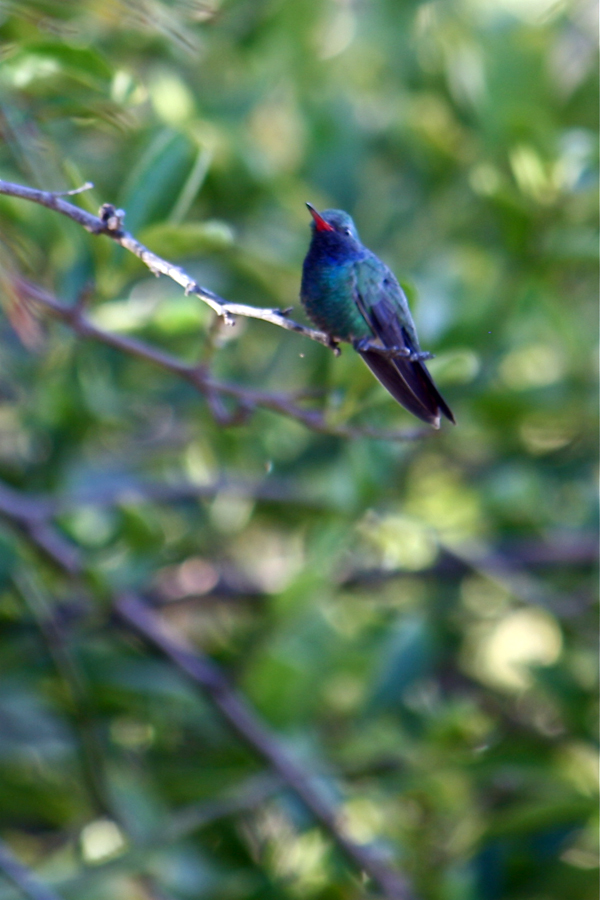 To me it seems a very exposed location. In fact, while I was watching her, the Broad-bill zoomed up and perched on a smaller branch just inches below the nest with hen, apparently unaware of her. She knew he was there: she froze, and waited perfectly still until he went away, which was soon — he’s a restless body.
To me it seems a very exposed location. In fact, while I was watching her, the Broad-bill zoomed up and perched on a smaller branch just inches below the nest with hen, apparently unaware of her. She knew he was there: she froze, and waited perfectly still until he went away, which was soon — he’s a restless body.
>> Male Broad-billed hummer, out of place, out of season, but he’s been here for 48 hours, that we know of. (Click to enlarge.)
The Broad-bill flew a short distance away and settled on a preferred perch in the “ugly” lemon tree. Although the photo isn’t perfectly sharp, you can see that the base of his bill is slightly flattened, making it look broad, especially in comparison with the needle-like rest-of-the-beak.
Incidentally, for the first time ever, the normally prolific “ugly” lemon tree set one whole lemon as its entire crop this season, and it dropped that during the tree-trimming episode. So as far as I’m concerned the shirking citrus can bear the burden of a tiny colorful bird as its tangy winter crop for a while longer.
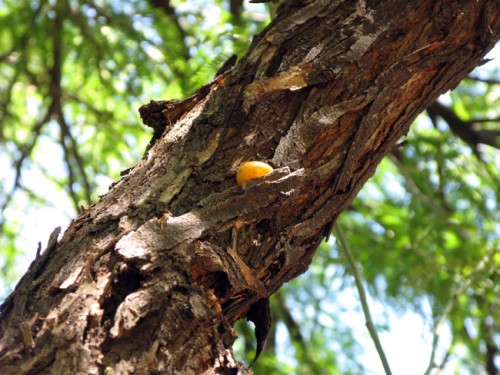 This morning, I found a golden egg, high up in a tree.
This morning, I found a golden egg, high up in a tree.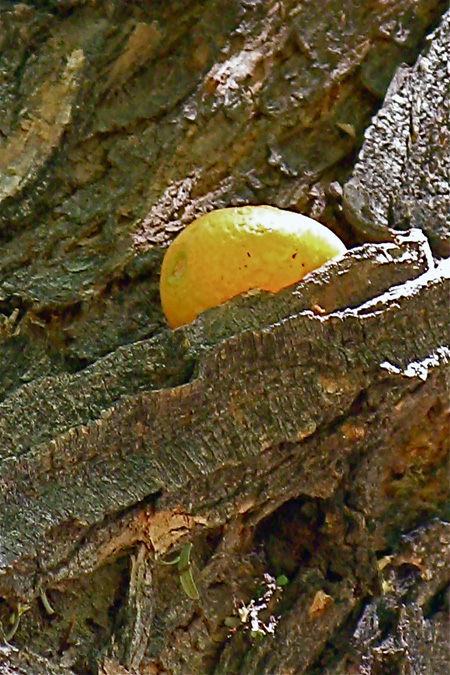
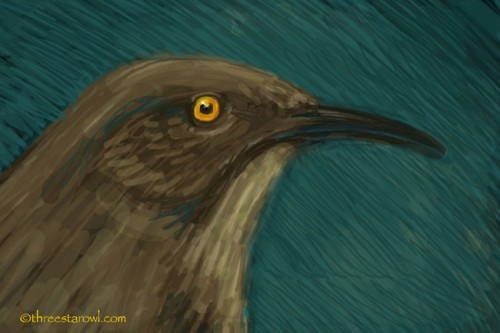 but I strongly suspect the Curve-billed thrashers, who have just fledged their ravenous brood and are working incessantly, combing every crevice in the yard to feed their greedy-gaped offspring. These industrious foragers will eat anything, seed, suet, bug, or fruit. And they have an eye for treasure, just as golden as loquats.
but I strongly suspect the Curve-billed thrashers, who have just fledged their ravenous brood and are working incessantly, combing every crevice in the yard to feed their greedy-gaped offspring. These industrious foragers will eat anything, seed, suet, bug, or fruit. And they have an eye for treasure, just as golden as loquats.
